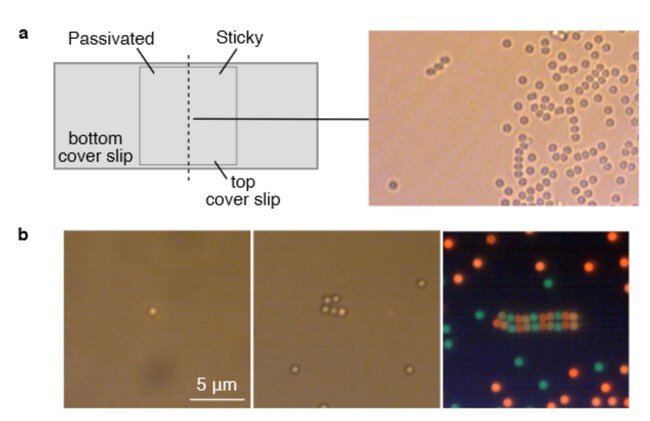 Colloidal particles can be programmed to interact in complex ways by functionalizing them with DNA oligonucleotides. Adding DNA strand-displacement reactions to the system allows these interparticle interactions to respond to specific changes in temperature. We present the requirements for thermally driven directed motion of colloidal particles, and we explore how these conditions can be realized experimentally using strand-displacement reactions. To evaluate the concept, we build and test a colloidal "dancer": a single particle that can be driven to move through a programmed sequence of steps along a one-dimensional track composed of other particles. The results of these tests reveal the capabilities and limitations of using DNA-mediated interactions for applications in dynamic systems. Specifically, we discuss how to design the substrate to limit complexity while permitting full control of the motile component, how to ratchet the interactions to move over many substrate positions with a limited regime of control parameters, and how to use technological developments to reduce the probability of detachment without sacrificing speed.
Colloidal particles can be programmed to interact in complex ways by functionalizing them with DNA oligonucleotides. Adding DNA strand-displacement reactions to the system allows these interparticle interactions to respond to specific changes in temperature. We present the requirements for thermally driven directed motion of colloidal particles, and we explore how these conditions can be realized experimentally using strand-displacement reactions. To evaluate the concept, we build and test a colloidal "dancer": a single particle that can be driven to move through a programmed sequence of steps along a one-dimensional track composed of other particles. The results of these tests reveal the capabilities and limitations of using DNA-mediated interactions for applications in dynamic systems. Specifically, we discuss how to design the substrate to limit complexity while permitting full control of the motile component, how to ratchet the interactions to move over many substrate positions with a limited regime of control parameters, and how to use technological developments to reduce the probability of detachment without sacrificing speed.
ACS NANO
Volume: 16 Issue: 6 Page: 9195-9202
Published: JUN 2022
By: Gehrels, Emily W.; Rogers, W. Benjamin; Zeravcic, Zorana; Manoharan, Vinothan N.
[DOI10.1021/acsnano.2c01454 https://pubs.acs.org/doi/10.1021/ac...]

